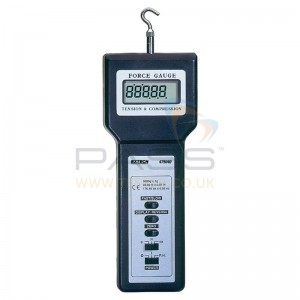Electric gates must be adequately guarded to avoid injury or death and yesterday a Leicester contractor pleaded guilty to breaching Regulation 18 of the Workplace (Health, Safety and Welfare) Regulations 1992 after a child’s head was trapped in electric gate, and was fined £4,000 with costs.

Test equipment like this Extech 475040 Digital Force Gauge measure closing/opening forces on electric gates
The accident could have proved fatal were it not for the rapid action of the child’s father, who tried to stop the gate closing and managed to pull it open enough to release his son’s head.
Dudley Magistrates’ Court heard how the contractor had failed to install adequate guarding on the electric gate at Pedmore Primary School in Stourbridge when in September 2012, the then eight-year-old boy was injured when his head became trapped between the edge of the closing gate and the gate post, and suffered severe bruising to his head and ear.
The Health and Safety Executive (HSE) found the contractor had failed to fit suitable guarding because it would not fit. After the hearing HSE inspector Sarah Palfreyman said the incident was entirely preventable and that the contractor should have either come up with an alternative or postponed the job until the problem was rectified.
She added: “People getting trapped a well-known risk in the industry and HSE has produced safety notes on the subject due to a number of fatalities involving children in recent years. I would encourage all suppliers and installers of electric gates to read it.”
Installation contractors of electrically powered gates need the right test equipment to measure closing/opening forces without which they cannot be sure that the gates meet safety standards. The gates should also reverse if they hit someone or something through sensors like light beams and must have an emergency release mechanism in case someone gets trapped.
When a contractor has installed the gates safely and met relevant safety requirements, a CE Mark should be applied and details kept of the installation and tests.
Two recent fatal incidents involved young children and in both cases, they were trapped between the closing edge of the gate and the gate post at the end of the gates' travel because their presence in the vicinity of the closing edge was not detected, and the closing force of the gate when they obstructed it was not limited to the values specified in Annex A of BS EN 12453:2001.


